How to Advertise on Google Maps with Local Search Ads

Does your business rely on being found in Google Maps to drive store visits or sales? There are numerous tactics you can follow to increase your organic rankings within Google Maps, but whether you’re ranking well already, or literally not on the map, advertising in Google Maps may help you increase both website traffic and foot traffic.
According to Google, nearly one third of all searches are related to location, and these location related searches have been growing 50% faster than mobile searches overall in the past year. In other words, it is more common for people to include a geography as part of their search query (e.g. “ski shop boston”) than to search for terms without a city or place.
75% of people who search for something nearby to their location end up visiting the store or establishment within a day. These are some great statistics for business owners and marketers to see, but how can they take advantage of this kind of local traffic? Local Search Ads on Google Maps may be the answer, both for websites that are otherwise struggling to gain visibility in Google Maps and those that are doing well, but want even more exposure.
How to Set Up Local Search Ads in the Google Ads Interface
To run ads on Google Maps, you will use a Search campaign because Google Maps is part of Google’s Search Network, which also includes Google Shopping, Google Play, and the Google Maps app.
Let’s assume you already have an active Google Ads account with a Search campaign. To start showing your ads on Google Maps, first navigate to one of your Search campaigns within the Google Ads interface.
Your next step is to add a Location Extension:
- Open Google Ads and select one of your Search campaigns.
- Click on “Ads & extensions” on the left panel.
- Click on “EXTENSIONS” on the top navigation bar.
- Click on the circular blue “+” button.
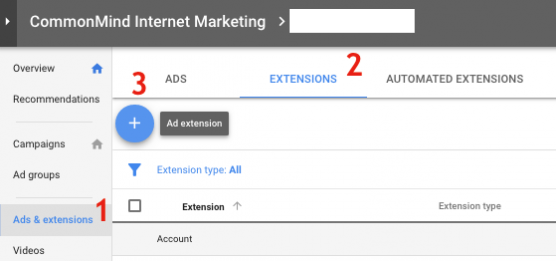
- Click on the “Location extension” option after clicking the blue circle.
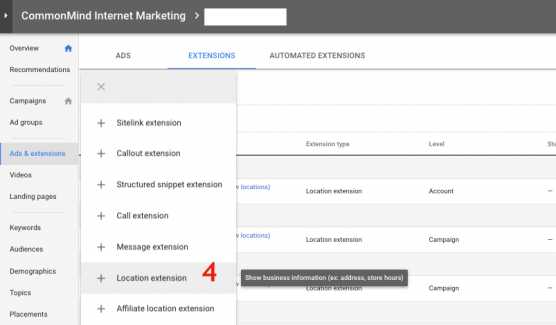
After clicking “Location extension”, you will be prompted to select a Google My Business Account for the Location Extension. If you have not linked your Google Ads and Google My Business accounts, you can request access to a Google My Business account using whichever email you used to set up the business page.
If you don’t have a Google My Business account, set up, following Google’s instructions on how to get started with Google My Business.
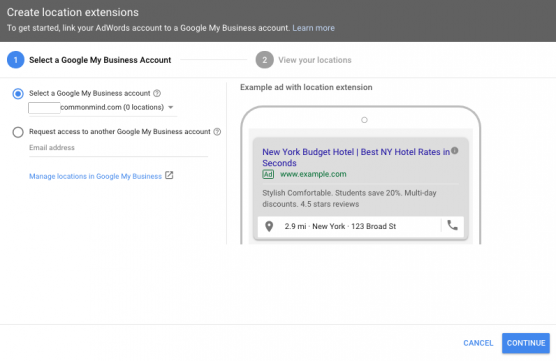
It is imperative that your Google My Business listing has accurate and updated information. You don’t want your potential customers arriving at an incorrect address or calling a disconnected phone number.
After linking your Google My Business listings to your Google Ads account and the locations are approved, it should appear like this, with each location of your business individually listed.
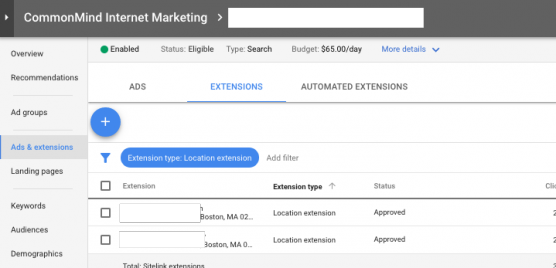
Next, it’s time to set up location targeting for your ads. If you have a campaign running, then you should already have some locations targeted. If your targeting is not set up:
- Navigate to “Locations” on the left sidebar.
- Click the blue circle to add a new location.
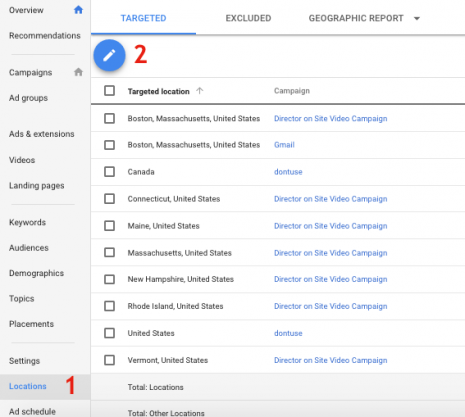
- Click “Select a campaign”.
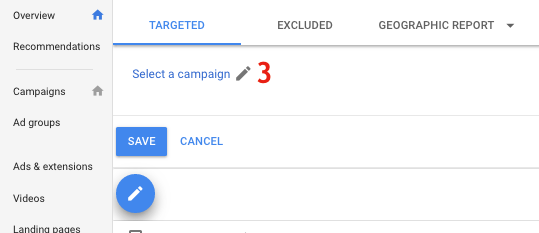
- Choose an active campaign.
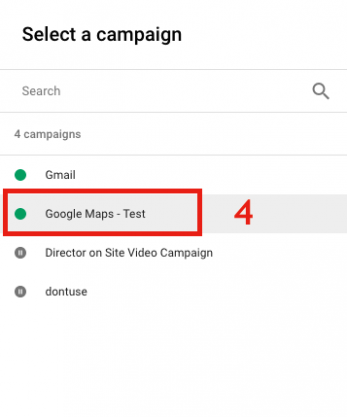
- Select the locations you would like to target (zip code, city, state, country, etc).
Pro Tip: Using Radius Targeting allows you to target an area surrounding a specific address or coordinates if you want to be more precise.
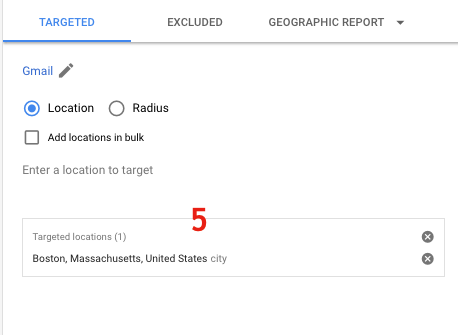
Your final step is to set up bid adjustments for areas close to your business. Let’s say you are targeting all of Boston, but your business is located specifically in zip code 02118. Add both “Boston, MA” and zip code “02118” as location targets. Then, adjust the bid for 02118 by clicking on the pencil next to the dash seen in the screenshot below. The same can be done for radius targeting, for example, increasing the bid for anyone within a one mile radius of your business.
![]()
A box will pop up allowing you to increase (or decrease) your bid for that location by a percentage you choose.
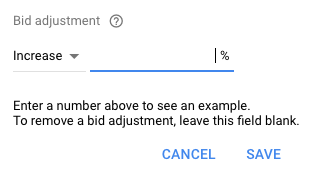
Now, people who are in your zip code have a much better chance of finding your business via Local Search Ads in Google Maps.
How to See the Performance of Your Local Search Ads
- Navigate to either the Campaigns, Ad Groups, Ads, or Keywords tab depending on what level of data you want to investigate.
- Click “Segment”.
- Select “Click type”.

Now you can see where each click came from. Focus on the the click types “Mobile clicks-to-call”, “Driving direction”, and “Get location details”. These are the clicks generated from Local Search Ads.

You are now up and running on Google Maps Local Search Ads!
Share this
You May Also Like
These Related Stories

How Does LinkedIn Bill For Ads?

6 LinkedIn Ad Design Best Practices to Get More Clicks
